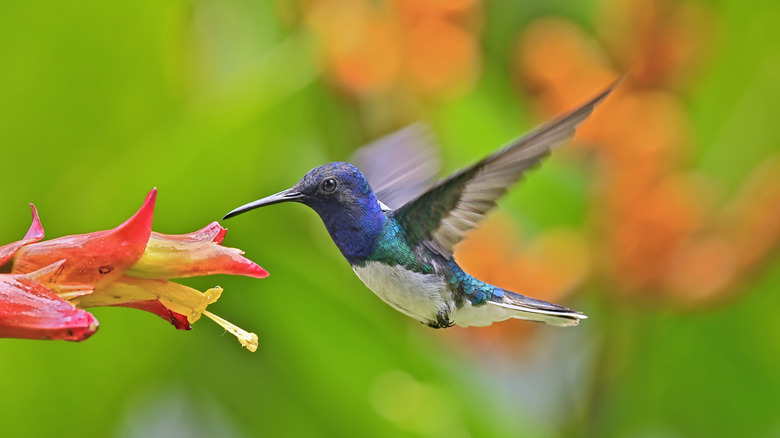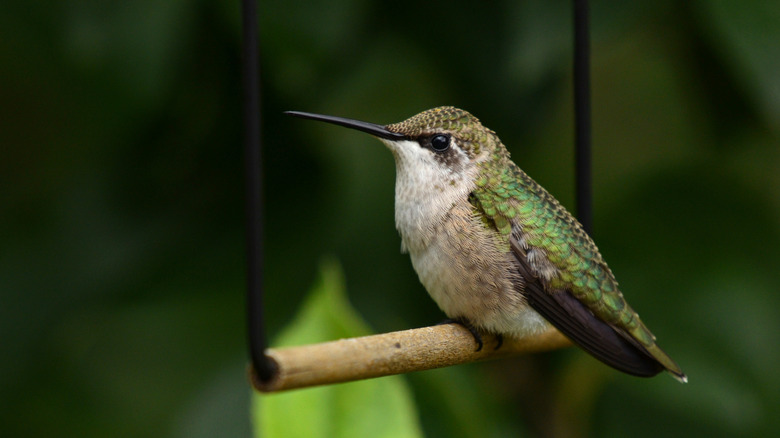The Best Place For A Hummingbird Swing To Attract Even More Feathered Friends
We may receive a commission on purchases made from links.
What more can be said about hummingbirds? These gorgeous birds with their iridescent feathers, unique needle-like beaks, and mesmerizing hover flight patterns make it easy to see why so many homeowners love them when they visit their backyards. But the benefits of attracting hummingbirds to your yard also include their free cross-pollination services of various plant species. However, convincing them that visiting your home is a worthwhile destination does take at least a small amount of effort. This typically includes planting hummingbird-attracting blooms or setting up one or two bird amenities for hummingbirds, including bird feeders, baths, or swings. And if you set your hummingbird swing about 1 foot away from your feeder or any other food source that they frequent, you've got a pretty solid chance of attracting a few of these stunning feathered friends. The reasoning behind this is that it provides hummingbirds with a convenient place to hang out, one that's close enough for them to keep an eye on their food supply.
When hummingbirds are not feeding or building bird nests, they spend the majority of their time perched on branches. Here, the birds stay on the lookout for insects to eat, clean themselves (also known as "preening"), and keep a watchful eye on their other go-to food sources of the area, including nectar-rich flowers and nearby bird feeders. This way, they don't have to travel far for grub time. With this placement technique, there are several types of beautiful hummingbirds you might find in your backyard soon enough, including favorites such as the Rufous, Ruby-throated, and Costa's hummingbird species — though this will really depend on your location.
More on ideal placement of hummingbird swings
Drawing more hummingbirds into your garden or yard is easy when you have food ready for them. And placing a swing or two nearby increases your chances of making this happen. However, it helps to stay mindful of environmental factors that may keep them away, including predators (such as falcons and hawks), rain protection, and sun exposure.
Placing the swing close to the ground isn't recommended, as animals like snakes and cats are common predators of hummingbirds, and mounting swings on low-hanging branches gives them easy access to the birds. Consider getting a pair of mini binoculars, such as these by QICBIUD, and taking part in a little bird watching for a few days to take note of where the hummingbirds actually land once they reach your yard. Doing so can give you the scoop on which branches may be their favorite and ideas for other perfect spots for your swing.
Once you pick a designated area for your swing, installation is a fairly quick process, depending on how you hang it. If you have yard elements that are already nearby, such as favorable tree branches, garden trellises, fence posts, or unused shepherd's hooks, you can have the swing up rather quickly. But if you don't, consider planting a long wooden stake or pole in the ground and mounting the swing on top of it. Be sure that the swing is within eye-level view of the hummingbirds' food source, and in clear enough view of various areas of the yard for the birds to actually notice it.

